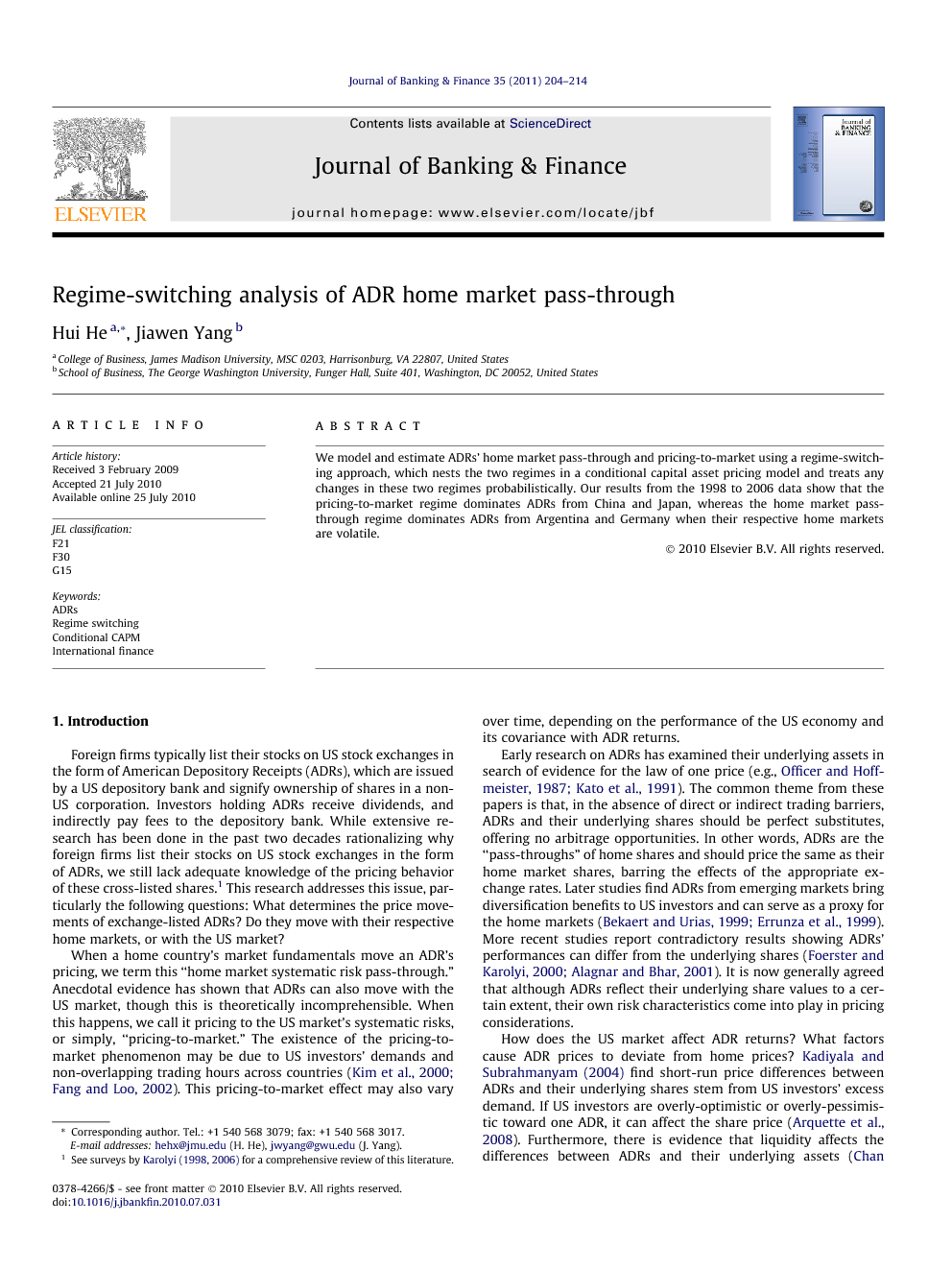ترجمه فارسی عنوان مقاله
تجزیه و تحلیل تغییر رژیم از مسیر بازار خانه ADR
عنوان انگلیسی
Regime-switching analysis of ADR home market pass-through
| کد مقاله | سال انتشار | تعداد صفحات مقاله انگلیسی |
|---|---|---|
| 15411 | 2011 | 11 صفحه PDF |
منبع

Publisher : Elsevier - Science Direct (الزویر - ساینس دایرکت)
Journal : Journal of Banking & Finance, Volume 35, Issue 1, January 2011, Pages 204–214
ترجمه کلمات کلیدی
- تغییر رژیم - کامپ شرطی - امور مالی بین المللی -
کلمات کلیدی انگلیسی
Regime switching,Conditional CAPM,International finance,

